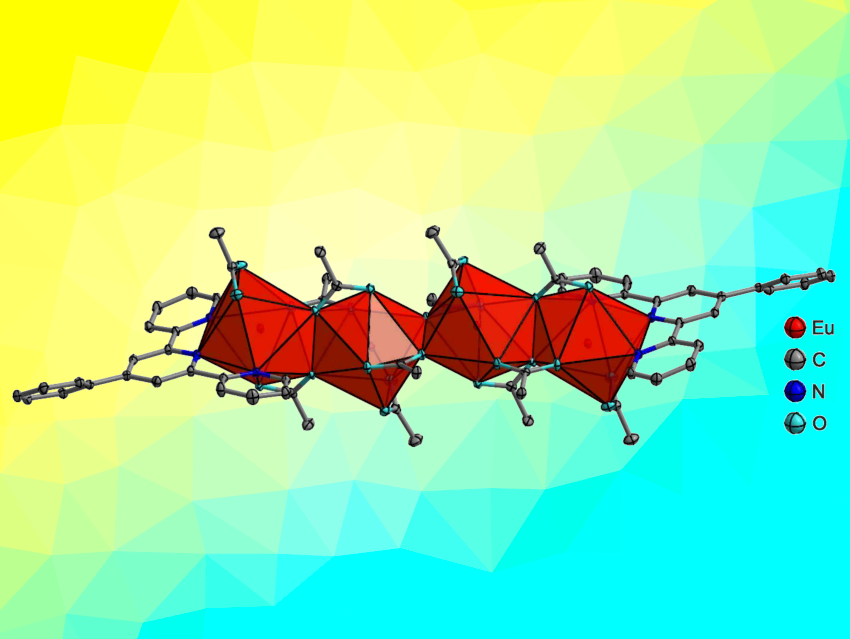The standardized, reliable determination of the properties of photophysical materials and their efficiency is crucial, e.g., for the development of LEDs, organic LEDs (OLEDs), and photovoltaics. However, the determination of photoluminescence quantum yields (PLQYs) in the solid state is not trivial. In order to check the instrumental setup for PLQY measurements, it is necessary to measure several photoluminescence standards. Most of the standards proposed in the literature are solutions of fluorophores. There are fewer solid-state photoluminescence standards available, which is a problem for solid-state spectroscopy.
Klaus Müller-Buschbaum, University of Gießen, Germany, and colleagues have developed lanthanide-based compounds that can serve as solid-state photoluminescence standards. The team prepared two new Ln3+-based complexes with 4′-phenyl-2,2′:6′,2″-terpyridine (ptpy) ligands, i.e., γ-[Ln4(OAc)12(ptpy)2] (Ln = Eu, Tb; europium derivative pictured). The complexes were prepared from ptpy and Eu(OAc)3·xH2O or Tb(OAc)3·xH2O.
Both products show high quantum yields, namely 58 % for the Eu complex and 46 % for the Tb complex. It is important to have a photoluminescence standard with high quantum yields, because for higher PLQY values, the error coming from improper measurements is easier to observe. The new standards are thermally stable and air-stable. They were used in different instrumental setups, and the team found that the complexes are suitable as standards to increase the reliability of PLQY determinations.
- Air‐Stable Solid‐State Photoluminescence Standards for Quantitative Measurements Based on 4’‐Phenyl‐2,2′:6′,2”‐terpyridine Complexes with Trivalent Lanthanides,
Alexander E. Sedykh, Mariia Becker, Marcel T. Seuffert, Dominik Heuler, Moritz Maxeiner, Dirk G. Kurth, Catherine E. Housecroft, Edwin C. Constable, Klaus Müller-Buschbaum,
ChemPhotoChem 2022.
https://doi.org/10.1002/cptc.202200244


